The popularity of bale shears has grown significantly on Irish farms over the past number of years.
The attachment is now being grant-aided through TAMS III under the Farm Safety Capital Investment Scheme (FSCIS), which has caught the attention of many farmers.
The official TAMS documentation states that a 60% grant aid on a silage bale slice with a plastic removing attachment unit is available, at a reference cost of €3,535. This means a successful applicant will get back €2,121 off the buying price once it costs at least the reference cost.
Farmers using bale shears quote time savings in the region of 50% to 60% compared to traditional feeding methods. Another major benefit is the safety element of not having to leave the tractor or loader cab and therefore staying clean and dry.
These types of machines tend to retain the film using two methods, either through a hook system or a pinching system.
The Irish Farmers Journal understands that these two systems are patented by two Irish manufacturers, while other manufacturers then use the concept under licence or by paying a royalty fee.
TAMS dates
There is ongoing uncertainty regarding the closure of tranche two of TAMS III, with still no date announced.
Tranche two opened on 1 July 2023, following a short open period for tranche one.
Despite the short timeframe, there was a large entry of over 8,500 applications. There is also uncertainty surrounding the approval of applications submitted under tranche one.
Minister for Agriculture Charlie McConalogue announced on 8 September that all eligible applications would be approved.
This theory has given the green light to applicants who have applied for mobile equipment to complete purchases, but this is still at an applicant’s own risk as approval will only be granted subject to verification of eligibility. There is no timeline forthcoming on when formal approval will be granted.
Tanco first launched its i70 bale shear at the Ploughing in 2009. The Carlow-based manufacturer further developed the concept in 2013, and launched the i73. This had the added capability of handling slighter larger bales.
The firm said this was also a requirement for the European market at the time. The i73 is designed to handle round bales of up to 1.55m in diameter.
The Tanco system is designed to retain the plastic using a gripping mechanism that holds the plastic without piercing it. Once the bale is discharged and the rams have been fully opened, the sequence valve will release the pressure from the clamp holding the plastic.
The i73 weighs in at 380kg (excluding brackets) and is designed to only handle round bales.
The machine also comes with the option of a quick-attach bucket which costs an additional €1,160 plus VAT.
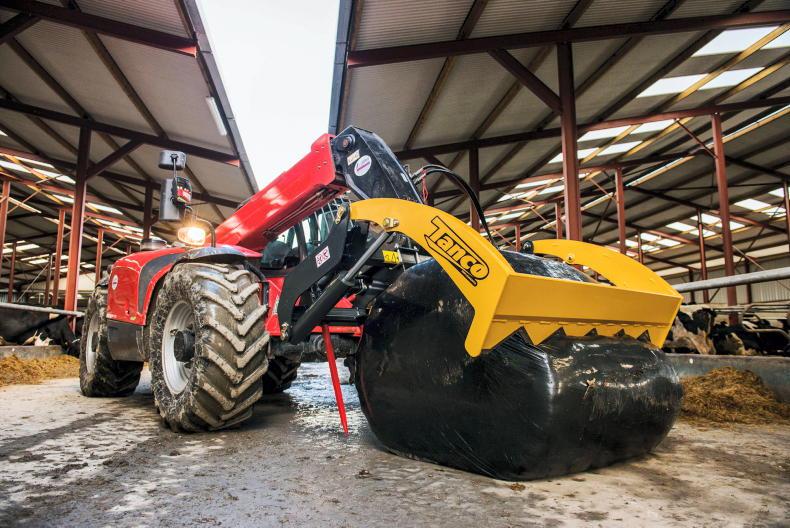
The i73 weighs in at 380kg (excluding brackets) and is designed to only handle round bales.
Tanco also manufactures an i75 Multishear, which can be used to feed out bales and pit silage. This weighs in at 730kg (without brackets). A range of bolt-on brackets are available for both. The i73 is priced at €4,670 plus VAT, while the i75 is €8,000. plus VAT.
Keltec Engineering first developed its bale shears in 2008. The Limerick manufacturer’s design works in a slightly different fashion compared with other manufacturers.
The firm’s shear pinches and holds the bale’s wrap and net on the top of the bale, while the cutting blade slices from the bottom upwards.
Once the bale is cut within 18in of the top of the frame, the sequencing valve is initiated and the grippers begin to close.
Due to the upwards fashion it cuts the bale, it is probably the most suitable if feeding into a diet feeder.
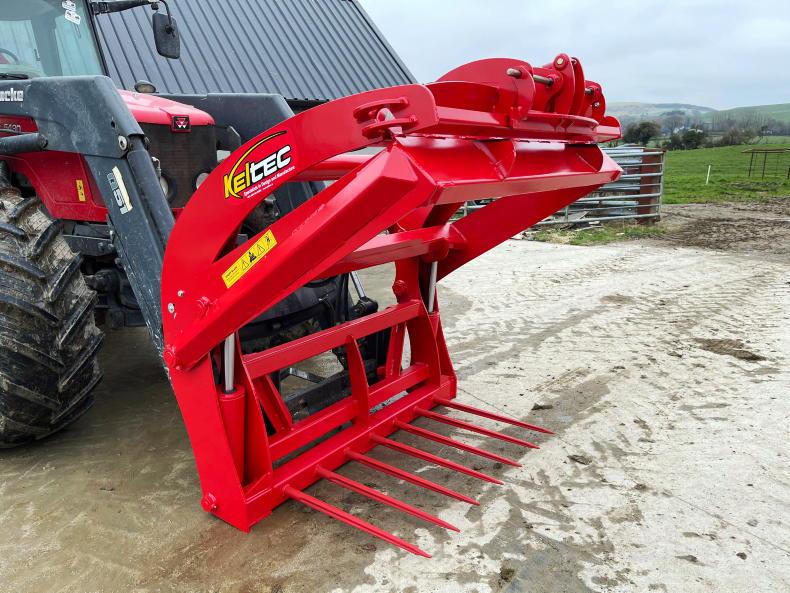
Due to the upwards fashion it cuts the bale, Keltec's unit is probably the most suited if feeding into a diet feeder.
As the bale is being sliced, the silage falls away from the wrap and net.
The machine comes with the option of a meal feeding bucket, which costs an additional €900 plus VAT.
It features a double-edged Hardox cutting blade and seven reinforced tines, while the operation is controlled using a double-acting valve.
Weighing in at 480kg (without brackets), the unit is priced at €3,750 plus VAT and comes with bolt-on brackets to suit.
Keltec also offers a combi shear with a plastic retaining device, which can be used to feed both bales and pit silage. It uses the same plastic retaining device, hardox tines and features a hardened steel cutting edge.
It is available in two sizes. The 5ft (1.52m) model weighs in at 745kg and is priced at €5,800 plus VAT. The 6ft 4in (1.93m) version weighs in at 800kg and is priced at €6,400 plus VAT.
Cashels Engineering in Co Mayo offers its bale cutter and film catcher range, comprising 4ft and 5ft models.
The latter is more suited to export markets where larger diameter bales are more common.
Cashels’ design includes a curved frame for a larger opening area to handle bales up to 1.35m (4ft model) and 1.6m (5ft model) in diameter.
It says it has the capability to shear through bales with 10t of pressure, for the toughest of frozen bales.
The firm uses a patented film/net retaining mechanism with four hooks mounted in a single row across the machine. These hooks are operated using a hydraulic sequencing valve, which engage and disengage as the blade is opened and closed.
The serrated cutting blade is double-edged and made using Hardox steel. An optional meal bucket attachment is available at a price of €1,050 plus VAT. This is retained on the tines via a spring-loaded pin.
The option of fitting additional tines on the outer sides is also available. Excluding brackets, the 4ft model weighs 400kg, while the larger 5ft model weighs 460kg. A range of bolt-on brackets are available. The 4ft model starts at €3,650 plus VAT.
Austrian manufacturer Goweil offers its round bale slicer (RBS). It is designed to be operated either on the tractor’s three-point linkage or via a telehandler or front-end loader.
The RBS uses eight hooks to hold and retain the film and net while the bale is being cut.
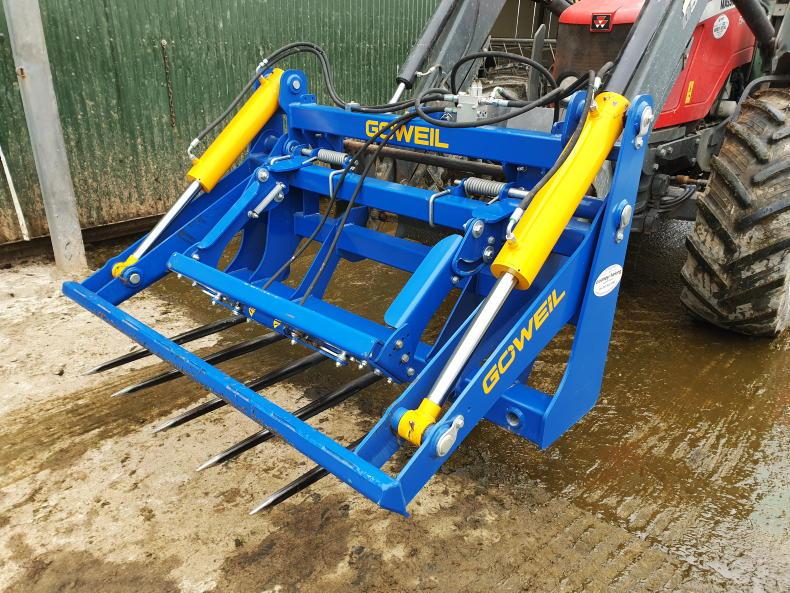
The RBS encompasses five 1m reinforced tines and a double-edged serrated Hardox cutting blade.
The hooks are operated using a hydraulic sequencing valve, which engages and disengages as the blade is opened and closed. The cutting and retaining operation is controlled using a double-acting valve.
As standard, the RBS encompasses five 1m reinforced tines and a double-edged serrated Hardox cutting blade.
Weighing in at 440kg, the unit is designed to handle 1.4m and 1.5m round bales, but can’t be used to feed out pit silage.
Import
The Cooney Furlong Machinery Company in Enniscorthy, Co Wexford, imports and distributes the Goweil range. Fitted with brackets to suit, the unit is priced at €4,000 plus VAT.
Carlow-based ProDig Attachments offers three options for feeding silage bales with film/net-retaining devices.
These include the Pro Slice, Megabite shear grab and the Shear Genius shear bucket.
The Pro Slice is a standalone bale shears for those only feeding bales, and suits those wanting to keep weight and or costs to a minimum.
The Pro Slice is compatible with all bales from 1.2m (4ft) to 1.5m (5ft).
As standard, the unit is fitted with five 985mm (39in) tines but is bushed for an additional two tines.
The device uses three pairs of jaw-like clamps and works via a hydraulic sequencing valve. It is built using Hardox and Domex plate steel, as well as heat-treated blades for a long wear life.
A range of bolt-on brackets are available for each.
The Pro Slice weighs 452kg and is priced at €4,036 plus VAT (including brackets).
Both the firm’s Mega Bite and its Shear Genius shear bucket are shear grabs with a bale splitter coupled with a film/net retainer.
The Shear Genius is available in widths from 1.5m to 2.5m.
Taking the GS 1500 as the entry model, it’s just under 5ft wide and weighs in at 720kg with a price of €6,065 plus VAT (ex-brackets).
Meanwhile, taking MB 1500 as the entry-level Mega Bite shear grab, it weighs in at 625kg and is priced at €6,000 plus VAT (ex-brackets). 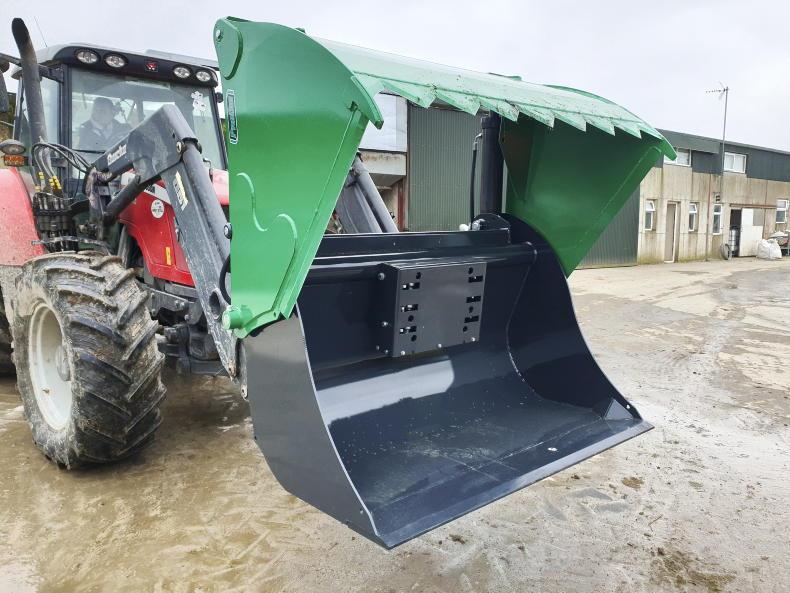
ProDig Attachments offers three options for feeding silage bales with film/net-retaining devices.
Dublin-based Fastparts distributes the Shearman 1700 bale shear. Fastparts is a division of Farmhand, which is the well-known Irish importer of Krone, Amazone, Quicke, Zuidberg and APV.
The 1.7m Shearman 1700 comes fitted with six tines and is designed to retain film and net using four hooks instead of a jaw-like clamping mechanism. This operates via a hydraulic sequencing valve, therefore only one double-acting service is required.
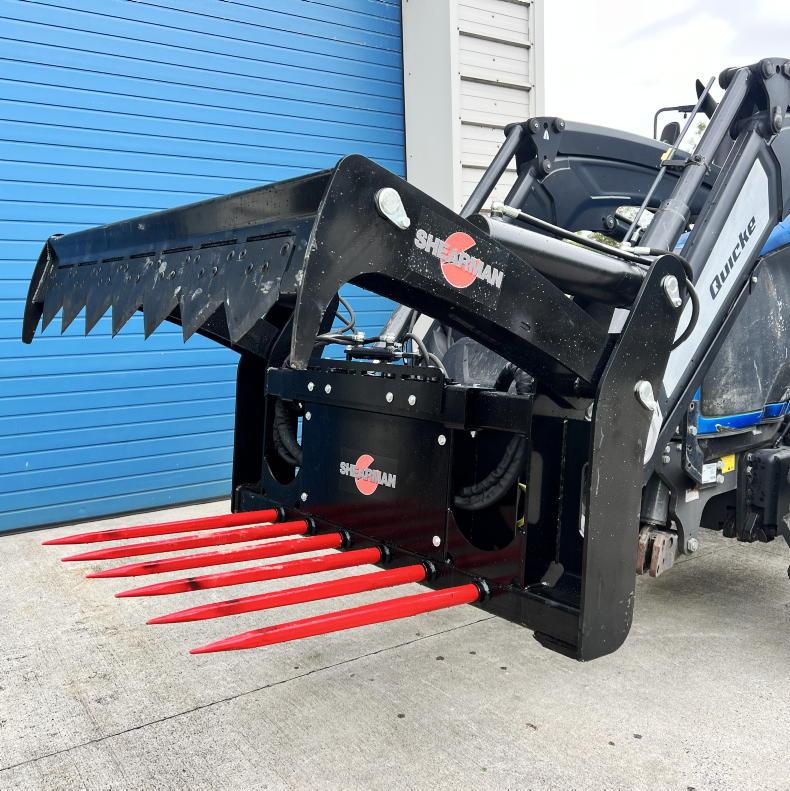
The Shearman is fitted with bolt-on knife sections for easy replacement.
Unlike its competitors, it is fitted with bolt-on knife sections for easy replacement. The Shearman is fitted as standard with weld-on euro brackets, while other brackets are available. The unit weighs in at 540kg and is priced at €3,520 plus VAT.
Also offered by Farmhand is Quicke’s new range of Silocut two-in-one attachments.
These act as a shear grab for cutting silage from clamps and it also splits bales, while retaining the net/plastic, similar to what some Irish manufacturers offer.
The Swedish company is offering the range in three different models with various options. Suitable for tractor loaders, compact wheel loaders and mid-sized telehandlers, there are three sizes available: M+, L+ and XL+.
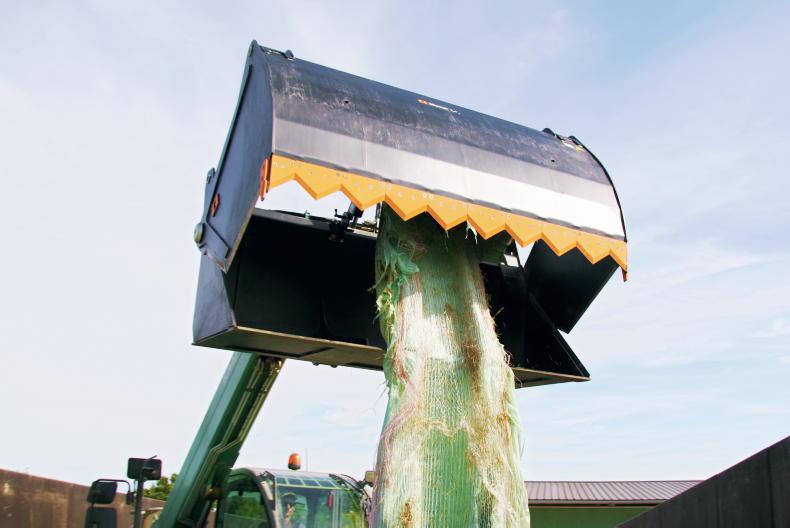
The Silocut L+ and XL+ models are available with a bale plastic retaining device as well as a pushout mechanism.
The Silocut L+ and XL+ models are available with a bale plastic retaining device, as well as a push-out mechanism.
Quicke says the bale wrap handler makes it possible split, grab the net/wrap and retain it, meaning there’s no need to remove the wrap by hand. The range can also be equipped with a push-out mechanism to ease unloading into diet feeders or other areas where space is limited.
Taking the L+ 175 model as the entry-level unit, it weighs in at 929kg and is priced at €7,800 plus VAT.
Nugent Engineering, based in Dungannon, Co Tyrone, offers its bale cutter and wrap catcher through its broad dealer network. It is designed to handle 4x4 round bales of silage.
Across the width of the machine are serrated knife sections and six tines as standard.
The film/net-retaining device comprises two pairs of jaw-like hooks, which are operated through a hydraulic sequencing valve. When the shears are closed, oil is diverted via the sequencing valve, engaging the hooks to catch the film/net.
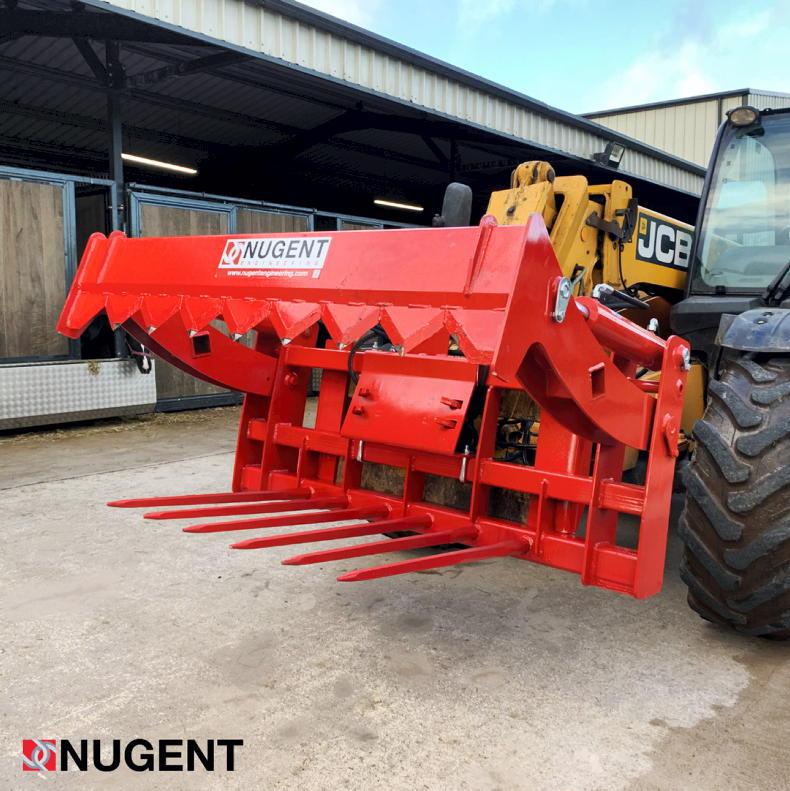
The film/net-retaining device comprises two pairs of jaw-like hooks, which are operated through a hydraulic sequencing valve.
Once the frame has been fully opened, the hooks release and let go of the film/net.
A range of bolt-on brackets are available to suit all headstocks. The Nugent bale shears weighs approximately 373kg and is priced at €3,350 plus VAT.
Hustler, the New Zealand-based machinery manufacturer, offers two models with film-retaining devices, namely the LX190 and the LX160. The LX190 is a sole bale slice, which uses four hooks to retain the film/net.
These hooks are operated through a hydraulic sequencing valve which engage and disengage as the blade is opened and closed.
Using four-inch rams, the unit weighs in at 469kg and is priced at €3,860 plus VAT.
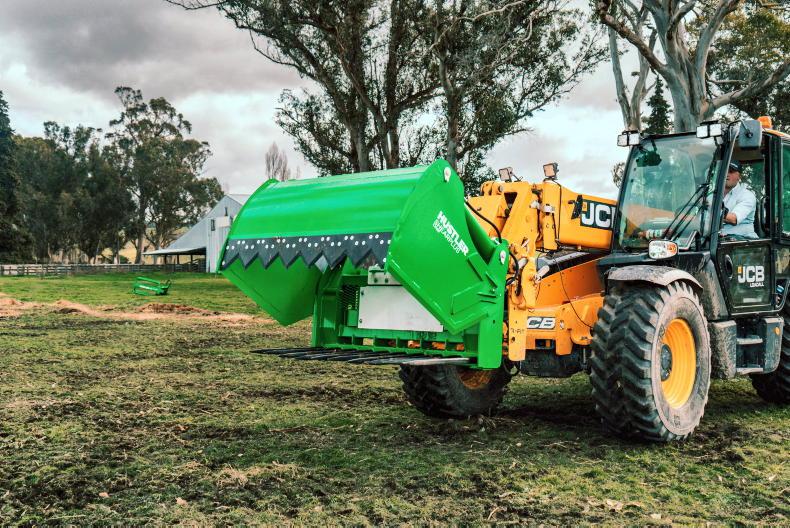
Hustler recently unveiled its new ShearPlus LX160 combi machine designed to feed both bales and pit silage.
Hustler recently took the wraps off its new ShearPlus LX160, which is a combi machine which is designed to feed both bales and pit silage. Weighing in at 702kg, it comes as standard with a meal bucket. The 5ft 3in unit is priced at €5,965 plus VAT.
Rohan
Limerick-based Rohan Engineering has been manufacturing its bale slice for over a decade. The company claims to be the only manufacturer that offers a floating clamp, designed to handle irregular-shaped round bales.
Once a bale has been picked up, the floating clamp hinges on the same frame as the cutting blade, meaning both move parallel to one another. The clamp is loaded using a hydraulic sequencing valve, which engages and disengages as the blade is opened and closed. This machine is designed for feeding 4x4 and 5x4 round bales.
The Adare manufacturer uses a double-edged Hardox cutting blade on both machines. For increased versatility, an optional bucket attachment is also available. As standard, the unit is fitted with five tines but is bushed for up to seven tines if two additional tines are required. The machine weighs in at 420kg (excluding brackets) and is supplied with brackets to suit any headstock. It is priced at €3,660 plus VAT.
Rohan also offers a combi unit for those after a hybrid pit and bale feeding option. It weighs in at 600kg and costs €5,280 plus VAT.
The popularity of bale shears has grown significantly on Irish farms over the past number of years.
The attachment is now being grant-aided through TAMS III under the Farm Safety Capital Investment Scheme (FSCIS), which has caught the attention of many farmers.
The official TAMS documentation states that a 60% grant aid on a silage bale slice with a plastic removing attachment unit is available, at a reference cost of €3,535. This means a successful applicant will get back €2,121 off the buying price once it costs at least the reference cost.
Farmers using bale shears quote time savings in the region of 50% to 60% compared to traditional feeding methods. Another major benefit is the safety element of not having to leave the tractor or loader cab and therefore staying clean and dry.
These types of machines tend to retain the film using two methods, either through a hook system or a pinching system.
The Irish Farmers Journal understands that these two systems are patented by two Irish manufacturers, while other manufacturers then use the concept under licence or by paying a royalty fee.
TAMS dates
There is ongoing uncertainty regarding the closure of tranche two of TAMS III, with still no date announced.
Tranche two opened on 1 July 2023, following a short open period for tranche one.
Despite the short timeframe, there was a large entry of over 8,500 applications. There is also uncertainty surrounding the approval of applications submitted under tranche one.
Minister for Agriculture Charlie McConalogue announced on 8 September that all eligible applications would be approved.
This theory has given the green light to applicants who have applied for mobile equipment to complete purchases, but this is still at an applicant’s own risk as approval will only be granted subject to verification of eligibility. There is no timeline forthcoming on when formal approval will be granted.
Tanco first launched its i70 bale shear at the Ploughing in 2009. The Carlow-based manufacturer further developed the concept in 2013, and launched the i73. This had the added capability of handling slighter larger bales.
The firm said this was also a requirement for the European market at the time. The i73 is designed to handle round bales of up to 1.55m in diameter.
The Tanco system is designed to retain the plastic using a gripping mechanism that holds the plastic without piercing it. Once the bale is discharged and the rams have been fully opened, the sequence valve will release the pressure from the clamp holding the plastic.
The i73 weighs in at 380kg (excluding brackets) and is designed to only handle round bales.
The machine also comes with the option of a quick-attach bucket which costs an additional €1,160 plus VAT.

The i73 weighs in at 380kg (excluding brackets) and is designed to only handle round bales.
Tanco also manufactures an i75 Multishear, which can be used to feed out bales and pit silage. This weighs in at 730kg (without brackets). A range of bolt-on brackets are available for both. The i73 is priced at €4,670 plus VAT, while the i75 is €8,000. plus VAT.
Keltec Engineering first developed its bale shears in 2008. The Limerick manufacturer’s design works in a slightly different fashion compared with other manufacturers.
The firm’s shear pinches and holds the bale’s wrap and net on the top of the bale, while the cutting blade slices from the bottom upwards.
Once the bale is cut within 18in of the top of the frame, the sequencing valve is initiated and the grippers begin to close.
Due to the upwards fashion it cuts the bale, it is probably the most suitable if feeding into a diet feeder.

Due to the upwards fashion it cuts the bale, Keltec's unit is probably the most suited if feeding into a diet feeder.
As the bale is being sliced, the silage falls away from the wrap and net.
The machine comes with the option of a meal feeding bucket, which costs an additional €900 plus VAT.
It features a double-edged Hardox cutting blade and seven reinforced tines, while the operation is controlled using a double-acting valve.
Weighing in at 480kg (without brackets), the unit is priced at €3,750 plus VAT and comes with bolt-on brackets to suit.
Keltec also offers a combi shear with a plastic retaining device, which can be used to feed both bales and pit silage. It uses the same plastic retaining device, hardox tines and features a hardened steel cutting edge.
It is available in two sizes. The 5ft (1.52m) model weighs in at 745kg and is priced at €5,800 plus VAT. The 6ft 4in (1.93m) version weighs in at 800kg and is priced at €6,400 plus VAT.
Cashels Engineering in Co Mayo offers its bale cutter and film catcher range, comprising 4ft and 5ft models.
The latter is more suited to export markets where larger diameter bales are more common.
Cashels’ design includes a curved frame for a larger opening area to handle bales up to 1.35m (4ft model) and 1.6m (5ft model) in diameter.
It says it has the capability to shear through bales with 10t of pressure, for the toughest of frozen bales.
The firm uses a patented film/net retaining mechanism with four hooks mounted in a single row across the machine. These hooks are operated using a hydraulic sequencing valve, which engage and disengage as the blade is opened and closed.
The serrated cutting blade is double-edged and made using Hardox steel. An optional meal bucket attachment is available at a price of €1,050 plus VAT. This is retained on the tines via a spring-loaded pin.
The option of fitting additional tines on the outer sides is also available. Excluding brackets, the 4ft model weighs 400kg, while the larger 5ft model weighs 460kg. A range of bolt-on brackets are available. The 4ft model starts at €3,650 plus VAT.
Austrian manufacturer Goweil offers its round bale slicer (RBS). It is designed to be operated either on the tractor’s three-point linkage or via a telehandler or front-end loader.
The RBS uses eight hooks to hold and retain the film and net while the bale is being cut.

The RBS encompasses five 1m reinforced tines and a double-edged serrated Hardox cutting blade.
The hooks are operated using a hydraulic sequencing valve, which engages and disengages as the blade is opened and closed. The cutting and retaining operation is controlled using a double-acting valve.
As standard, the RBS encompasses five 1m reinforced tines and a double-edged serrated Hardox cutting blade.
Weighing in at 440kg, the unit is designed to handle 1.4m and 1.5m round bales, but can’t be used to feed out pit silage.
Import
The Cooney Furlong Machinery Company in Enniscorthy, Co Wexford, imports and distributes the Goweil range. Fitted with brackets to suit, the unit is priced at €4,000 plus VAT.
Carlow-based ProDig Attachments offers three options for feeding silage bales with film/net-retaining devices.
These include the Pro Slice, Megabite shear grab and the Shear Genius shear bucket.
The Pro Slice is a standalone bale shears for those only feeding bales, and suits those wanting to keep weight and or costs to a minimum.
The Pro Slice is compatible with all bales from 1.2m (4ft) to 1.5m (5ft).
As standard, the unit is fitted with five 985mm (39in) tines but is bushed for an additional two tines.
The device uses three pairs of jaw-like clamps and works via a hydraulic sequencing valve. It is built using Hardox and Domex plate steel, as well as heat-treated blades for a long wear life.
A range of bolt-on brackets are available for each.
The Pro Slice weighs 452kg and is priced at €4,036 plus VAT (including brackets).
Both the firm’s Mega Bite and its Shear Genius shear bucket are shear grabs with a bale splitter coupled with a film/net retainer.
The Shear Genius is available in widths from 1.5m to 2.5m.
Taking the GS 1500 as the entry model, it’s just under 5ft wide and weighs in at 720kg with a price of €6,065 plus VAT (ex-brackets).
Meanwhile, taking MB 1500 as the entry-level Mega Bite shear grab, it weighs in at 625kg and is priced at €6,000 plus VAT (ex-brackets). 
ProDig Attachments offers three options for feeding silage bales with film/net-retaining devices.
Dublin-based Fastparts distributes the Shearman 1700 bale shear. Fastparts is a division of Farmhand, which is the well-known Irish importer of Krone, Amazone, Quicke, Zuidberg and APV.
The 1.7m Shearman 1700 comes fitted with six tines and is designed to retain film and net using four hooks instead of a jaw-like clamping mechanism. This operates via a hydraulic sequencing valve, therefore only one double-acting service is required.

The Shearman is fitted with bolt-on knife sections for easy replacement.
Unlike its competitors, it is fitted with bolt-on knife sections for easy replacement. The Shearman is fitted as standard with weld-on euro brackets, while other brackets are available. The unit weighs in at 540kg and is priced at €3,520 plus VAT.
Also offered by Farmhand is Quicke’s new range of Silocut two-in-one attachments.
These act as a shear grab for cutting silage from clamps and it also splits bales, while retaining the net/plastic, similar to what some Irish manufacturers offer.
The Swedish company is offering the range in three different models with various options. Suitable for tractor loaders, compact wheel loaders and mid-sized telehandlers, there are three sizes available: M+, L+ and XL+.

The Silocut L+ and XL+ models are available with a bale plastic retaining device as well as a pushout mechanism.
The Silocut L+ and XL+ models are available with a bale plastic retaining device, as well as a push-out mechanism.
Quicke says the bale wrap handler makes it possible split, grab the net/wrap and retain it, meaning there’s no need to remove the wrap by hand. The range can also be equipped with a push-out mechanism to ease unloading into diet feeders or other areas where space is limited.
Taking the L+ 175 model as the entry-level unit, it weighs in at 929kg and is priced at €7,800 plus VAT.
Nugent Engineering, based in Dungannon, Co Tyrone, offers its bale cutter and wrap catcher through its broad dealer network. It is designed to handle 4x4 round bales of silage.
Across the width of the machine are serrated knife sections and six tines as standard.
The film/net-retaining device comprises two pairs of jaw-like hooks, which are operated through a hydraulic sequencing valve. When the shears are closed, oil is diverted via the sequencing valve, engaging the hooks to catch the film/net.

The film/net-retaining device comprises two pairs of jaw-like hooks, which are operated through a hydraulic sequencing valve.
Once the frame has been fully opened, the hooks release and let go of the film/net.
A range of bolt-on brackets are available to suit all headstocks. The Nugent bale shears weighs approximately 373kg and is priced at €3,350 plus VAT.
Hustler, the New Zealand-based machinery manufacturer, offers two models with film-retaining devices, namely the LX190 and the LX160. The LX190 is a sole bale slice, which uses four hooks to retain the film/net.
These hooks are operated through a hydraulic sequencing valve which engage and disengage as the blade is opened and closed.
Using four-inch rams, the unit weighs in at 469kg and is priced at €3,860 plus VAT.

Hustler recently unveiled its new ShearPlus LX160 combi machine designed to feed both bales and pit silage.
Hustler recently took the wraps off its new ShearPlus LX160, which is a combi machine which is designed to feed both bales and pit silage. Weighing in at 702kg, it comes as standard with a meal bucket. The 5ft 3in unit is priced at €5,965 plus VAT.
Rohan
Limerick-based Rohan Engineering has been manufacturing its bale slice for over a decade. The company claims to be the only manufacturer that offers a floating clamp, designed to handle irregular-shaped round bales.
Once a bale has been picked up, the floating clamp hinges on the same frame as the cutting blade, meaning both move parallel to one another. The clamp is loaded using a hydraulic sequencing valve, which engages and disengages as the blade is opened and closed. This machine is designed for feeding 4x4 and 5x4 round bales.
The Adare manufacturer uses a double-edged Hardox cutting blade on both machines. For increased versatility, an optional bucket attachment is also available. As standard, the unit is fitted with five tines but is bushed for up to seven tines if two additional tines are required. The machine weighs in at 420kg (excluding brackets) and is supplied with brackets to suit any headstock. It is priced at €3,660 plus VAT.
Rohan also offers a combi unit for those after a hybrid pit and bale feeding option. It weighs in at 600kg and costs €5,280 plus VAT.













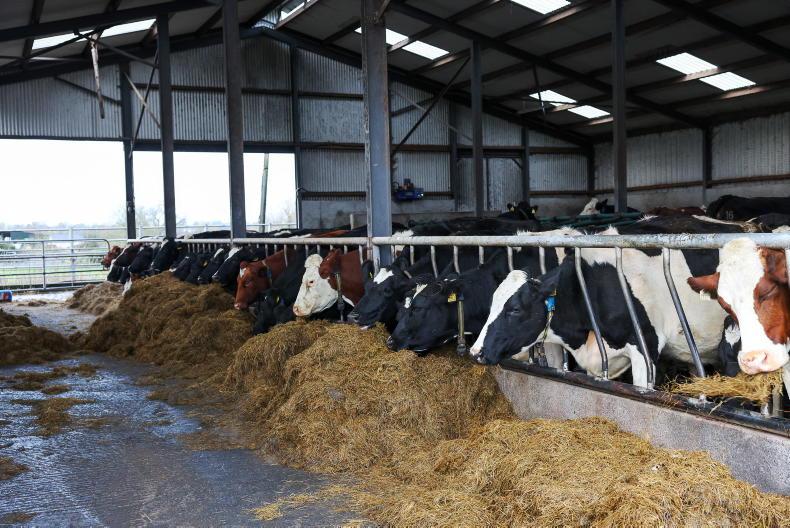

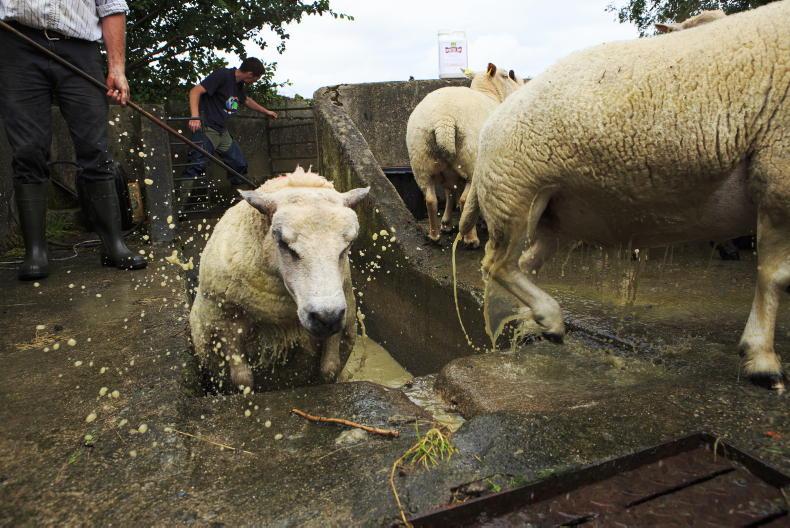
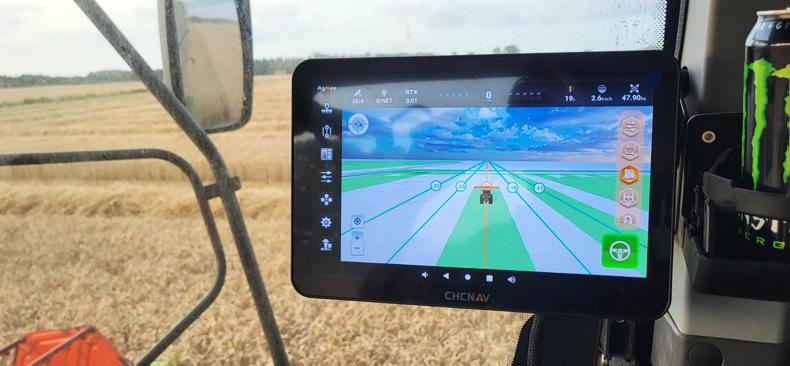
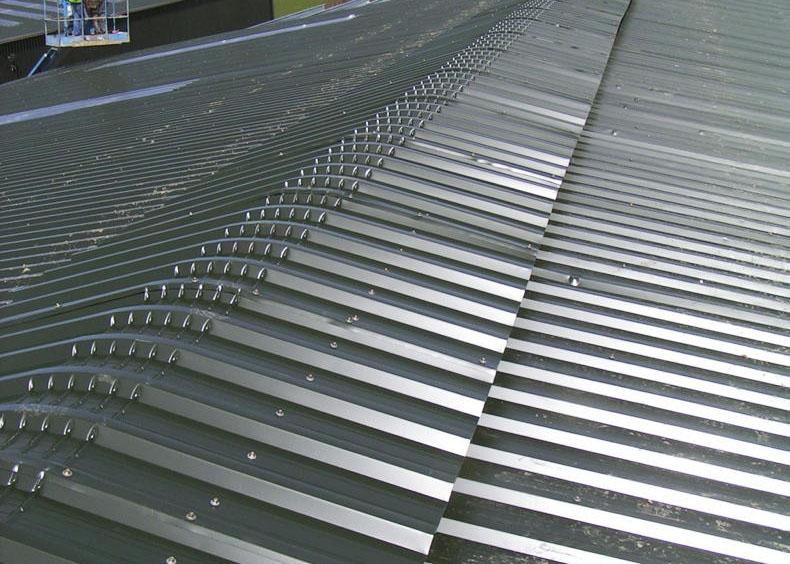
SHARING OPTIONS